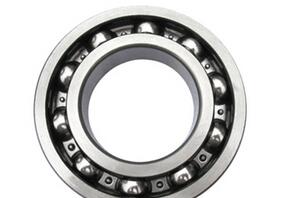Deep groove ball bearings are a very common type of rolling bearings. The basic deep groove ball bearing consists of an outer ring, an inner ring, a set of steel balls and a set of cages. There are two types of deep groove ball bearings, single row and double row. The deep groove ball structure is divided into two types: sealed and open. The open type means that the bearing does not have a sealed structure. The sealed deep groove ball is divided into dust-proof and oil-proof. seal.
The advantages of deep groove ball bearings are as follows:
1. Under normal conditions, the efficiency of rolling bearings is equivalent to that of hydrodynamic lubricated bearings, but higher than hybrid lubricated bearings;
2. The radial clearance is relatively small, and the radial angular contact bearing can be pre-tightened and the pre-tightening force can be used to eliminate the clearance, and the operation accuracy is high;
3. For the shaft diameter of the same size, the width of the moving bearing is smaller than that of the sliding bearing. The axial structure of the machine can be tightly violated;
4. Most rolling bearings can be subjected to radial and axial loads at the same time, so the bearing assembly structure is simple;
5. Less lubricant consumption, easy to seal and easy to maintain.
Deep groove ball bearings are allowed to have a slight running noise during work. If the noise is too loud or there is abnormal noise or impact, it indicates that the bearing is faulty. The reasons for the noise produced by deep groove ball bearings are as follows:
1. The mating surfaces of the inner and outer rings of the SKF bearing are worn out. Due to this kind of wear, it destroys the matching relationship between the bearing and the housing, and the bearing and the shaft, causing the axis to deviate from the correct position, causing abnormal noise when the shaft is moving at high speed. When the bearing is fatigued, the metal on its surface will peel off, which will also increase the radial clearance of the bearing and produce abnormal noise. Insufficient bearing lubrication, formation of dry friction, and bearing breakage will all produce abnormal noise. After the bearing is worn and loosened, the cage is loosened and damaged, which will also cause damage to the bearing with abnormal noise.
2. When the deep groove ball bearing is disassembled and inspected, the fault and the cause of the damage can be judged according to the damage of the bearing.






